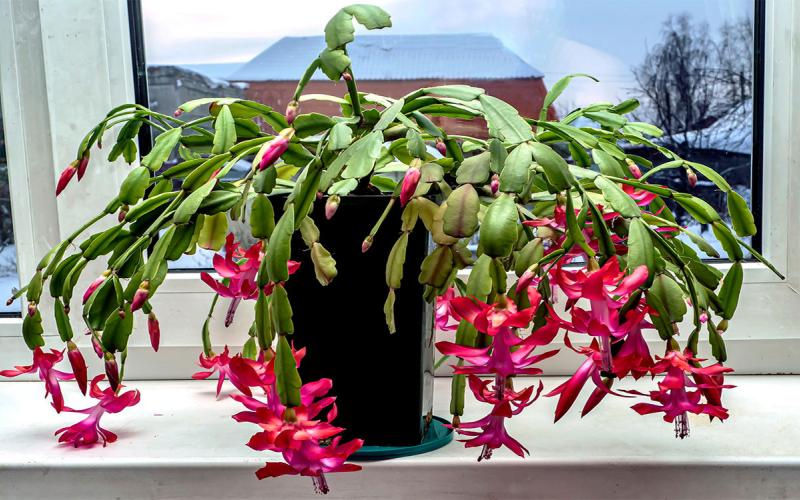
A sample came in from a recently felled Scotch pine tree down in Southeastern South Dakota. The hole and sawdust is due to a sawyer beetle that had infested the tree. We are seeing an increase in pine wilt in the Southeastern part of the state with numerous reports of Austrian and Scotch pines turning brown and dying within last summer. Many of these trees, which appeared healthy and green last spring, are dead this autumn and are covered with brown-to-gray needles hanging from the twigs.
About Pine Wilt Disease

Pine wilt is a disease caused by a nematode (and possibly an associated bacteria). The feeding by the nematode causes the water-conducting pores in the tree to collapse resulting in the tree “wilting” very quickly. The nematode is carried by longhorn or sawyer beetles, which introduce the nematode to a new host as they feed on the twigs. Stressed and recently killed pines are also attacked by the sawyer beetles, which lay eggs on the bark with the larvae burrowing through the trunk as they feed, so you can find pines infested with sawyer beetles that do not contain the nematode. Diplodia tip blight is also a common threat to Austrian pines and there are numerous stands of declining Austrian pines in tree belts across the Southeastern part of the state and sawyer beetles can be found in these trees.
Pine wilt disease has been a serious problem since first noted in 1979 in Missouri, and now this wilt has been linked to the loss of thousands of pines in the Central U.S. The region most-affected has been the Central Plains from Kansas to Southern South Dakota (up to about I-90). The disease has been found in Southern South Dakota during the past several decades. It periodically results in outbreaks, with many trees lost in a specific community or county for a year or two. The disease affects exotic pines, Austrian, Scotch, and Mugo; our native pines, ponderosa pine for example, are not killed by the disease. The disease also appears on older trees, and you usually do not see it on pines younger than 10-to-15 years in the landscape as can be noted in the picture.
Management Considerations
The management of this disease centers on promptly removing and destroying any infected pine tree. This removal and destruction can take place any time during the autumn or winter but should be completed before the end of April, as this marks the time when the sawyer beetles may begin to emerge from the dead, infected tree and move to a new host. The infected wood should be either burned or chipped to kill the beetles before they emerge; merely removing the bark from the wood is not sufficient to kill the insect or nematode. The infested tree should also be cut as flush to the ground as possible, as the nematode and sawyers can survive in stumps. They can also survive in firewood for a time, so recently killed trees should not be cut into firewood and stored. The disease can be spread by chips, but only if the chips are fresh and placed against the trunk of a healthy pine tree. Storing the chips for 6 weeks will dry them sufficiently so that the danger of disease transmission is minimal. There is also a pesticide that can be injected into a healthy tree to prevent infection, however, due to the expense (about $200 a tree) and the need to inject the chemical every three years, it is best limited to high-value Scotch pines in a residential landscape.
Pine wilt is not the only serious disease to affect pines in our state. Diplodia tip blight and dothistroma needle blight are two other diseases that appear in the area, and they require other treatments to protect trees. It is important to identify what disease is affecting the pine before treatments are initiated.

